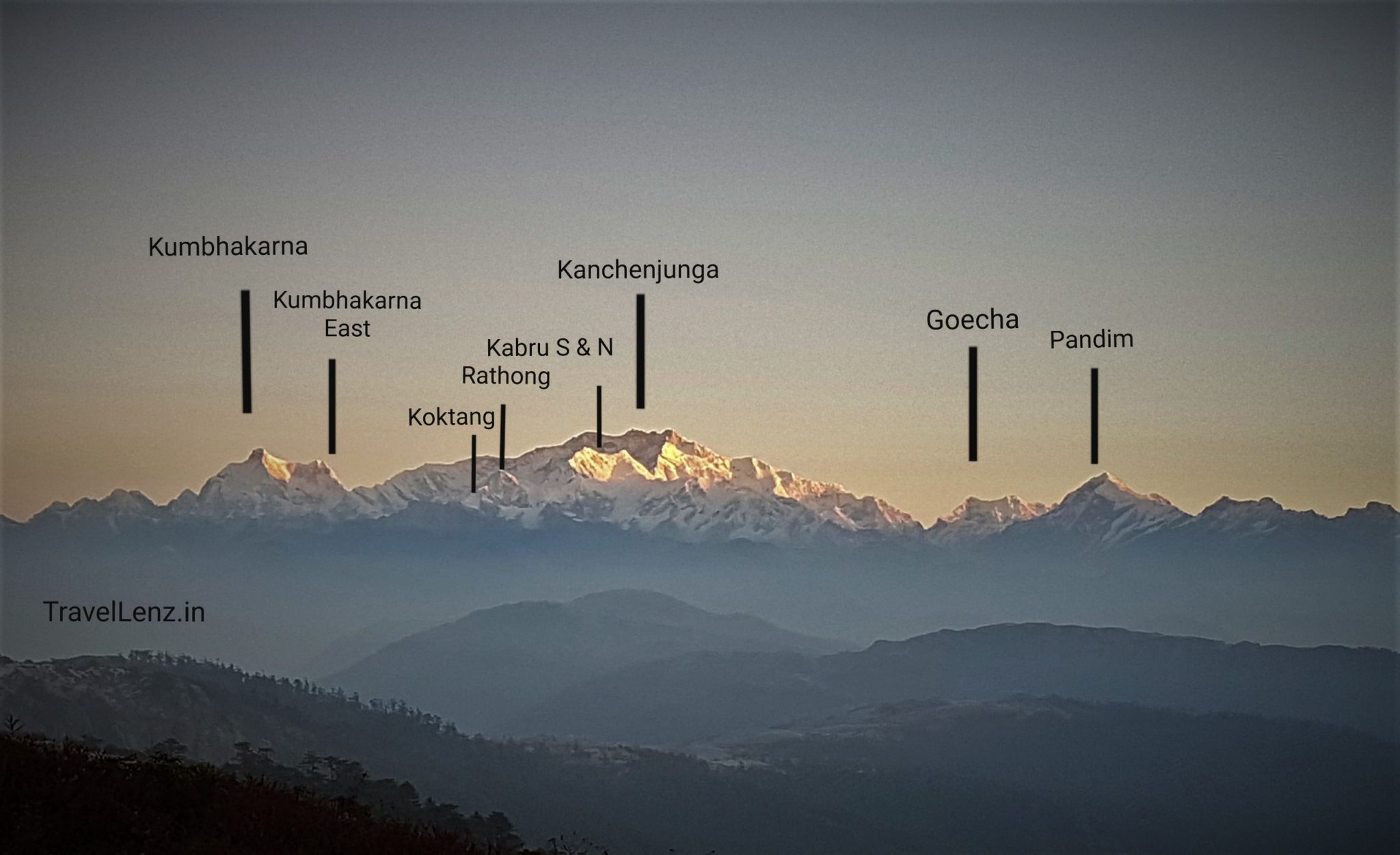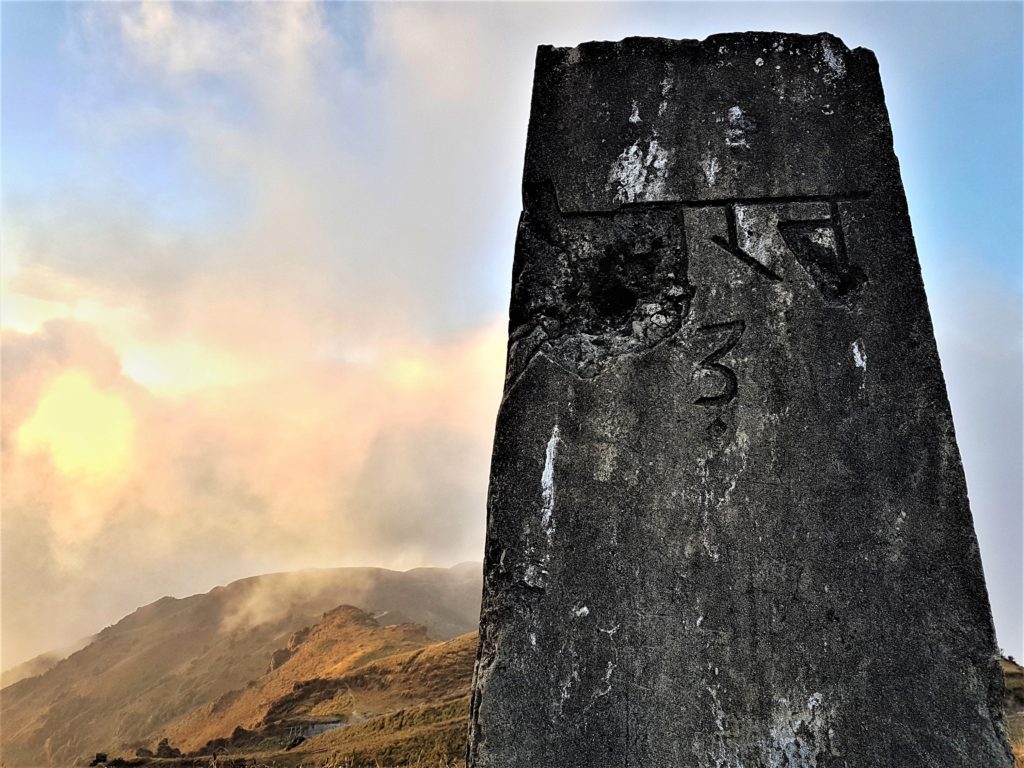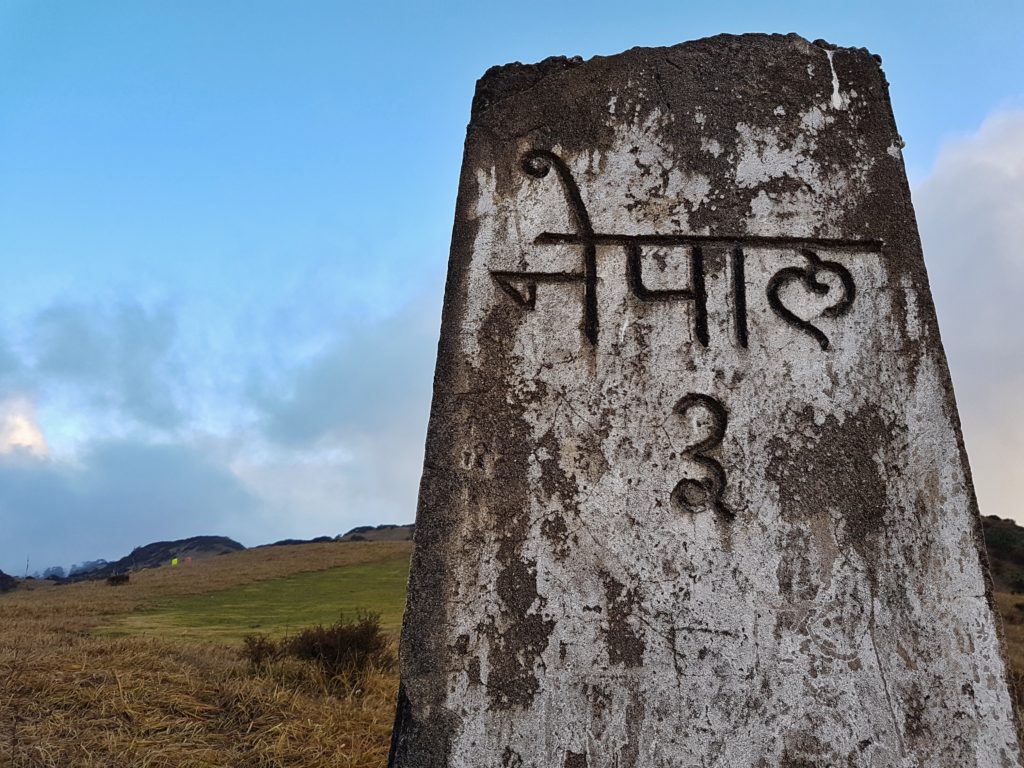Last Updated on May 3, 2021
There is a magical place where the sun glows, the moon shimmers and the clouds hover over four of the world’s highest mountain peaks – and that’s just one of the main reasons why Sandakphu should be your next Himalayan trek. Read on to find more.
There’s a rock-strewn track that lies high up in the Singalila range of the eastern Himalayas. It is beautifully sandwiched between India and Nepal on the Singalila ridge where poisonous aconite flowers grow in the backdrop of fluttering prayer flags.
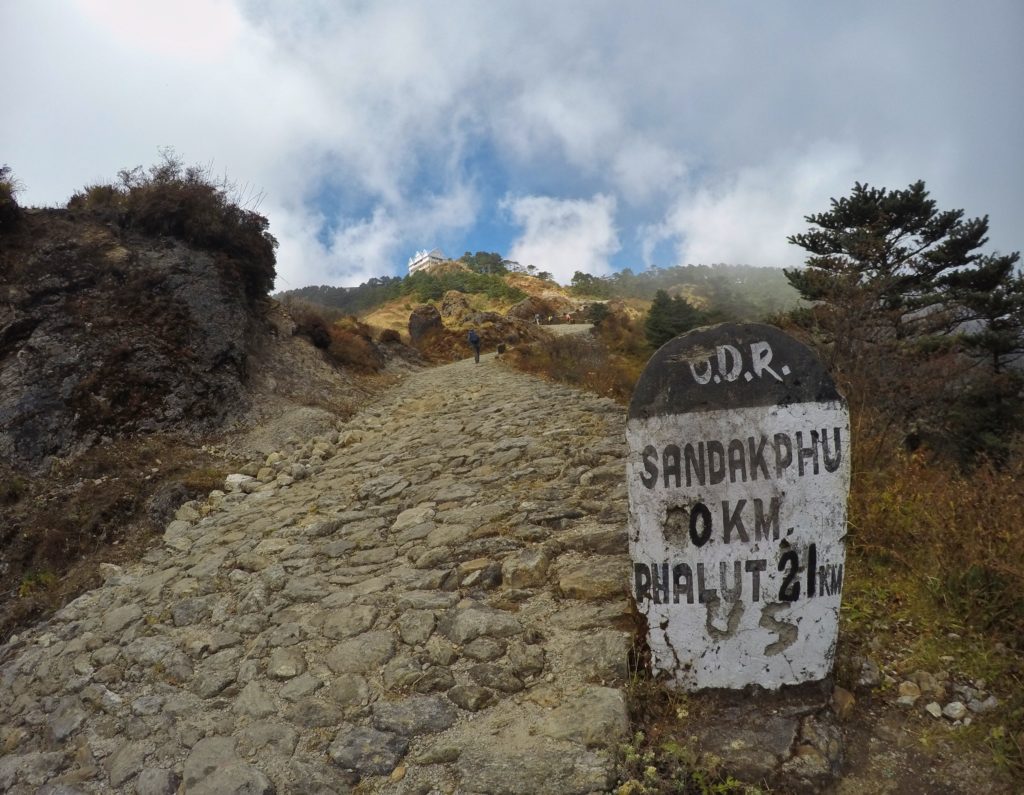
On this trail, which is part of the Singalila National Park, lies Sandakphu, the highest point on the ridge and the tallest peak in West Bengal (3636 m/11,929 ft). That feeling of being in a magical place where the sun glows, the moon shimmers and the clouds hover over four of the world’s highest mountain peaks is one of the chief reasons why Sandakphu should be your next Himalayan trek.
And then there are more. In fact, here are 15 reasons why you should consider Sandakphu as your next Himalayan trek.
The closest you can get to see four of the tallest mountains in the world
Yes, as we mentioned earlier, Sandakphu is the one trek, among the widely available ones on the general market, where you can get to sight four of the world’s five highest peaks. And we are talking of the really big boys, the ‘8000ers’, all except K2 that lies in Karakoram, Pakistan.
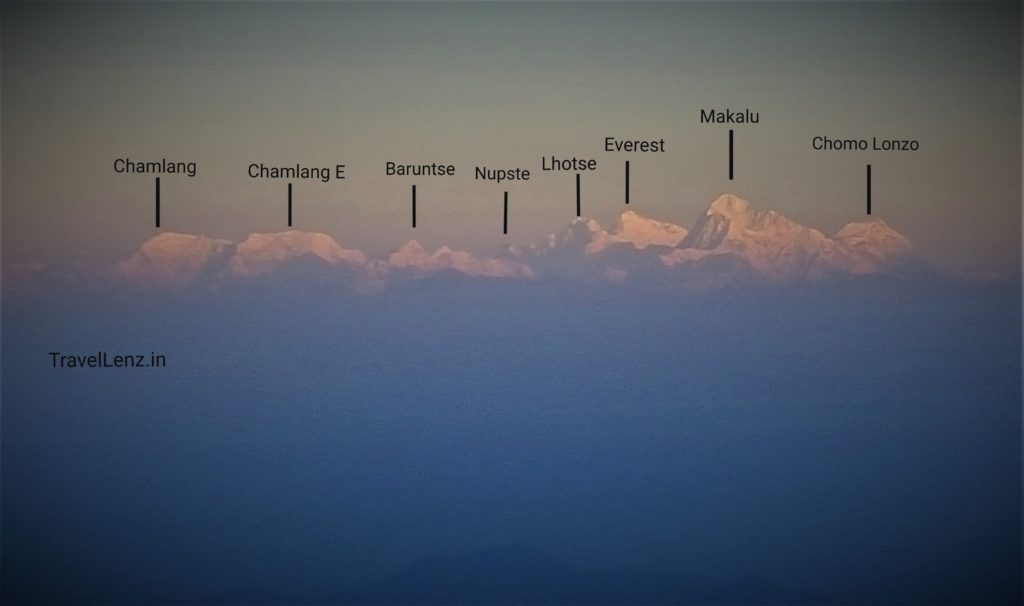
This means that the Sandakphu route offers distant views of Mt. Everest (8850 m), Lhotse (8501 m) and Makalu (8475 m) and a close view of Kanchenjunga (8586 m). Some of the other 7000 m peaks that are visible include Baruntse (7129 m), Nuptse (7861 m) and Chamlang (7319 m). The sight of the towering peaks rising above the clouds is something you have to see for yourself.
The sleeping Buddha and the panoramic extravaganza
But what dominates the landscape is the magnificent Kanchenjunga cluster known as the sleeping Buddha, due to its uncanny resemblance to a person sleeping. Mt. Kumbhakarna forms the head, while the Kanchenjunga peaks, the Kabru cluster, Rathong and Koktang form the upper torso. Some of the other peaks seen towards the lower end include Pandim and Goecha.
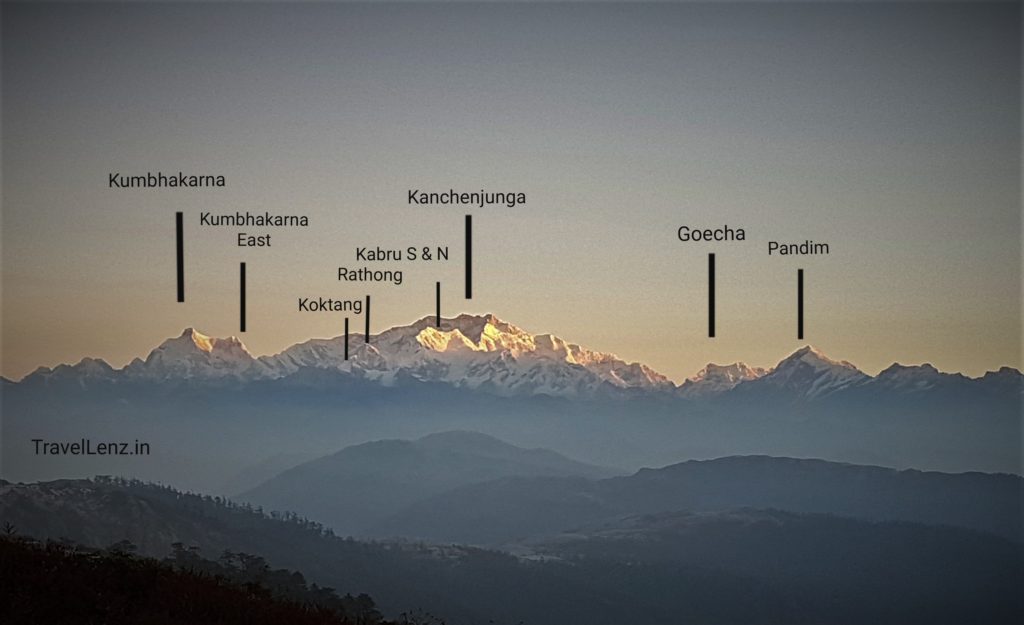
You get your first unobstructed view of Sleeping Buddha from Tumling. You wake up to see the Sleeping Buddha, in all its glory, soaked in the soft early morning crimson sky, slowly emerging from the veils of white fluffy clouds!
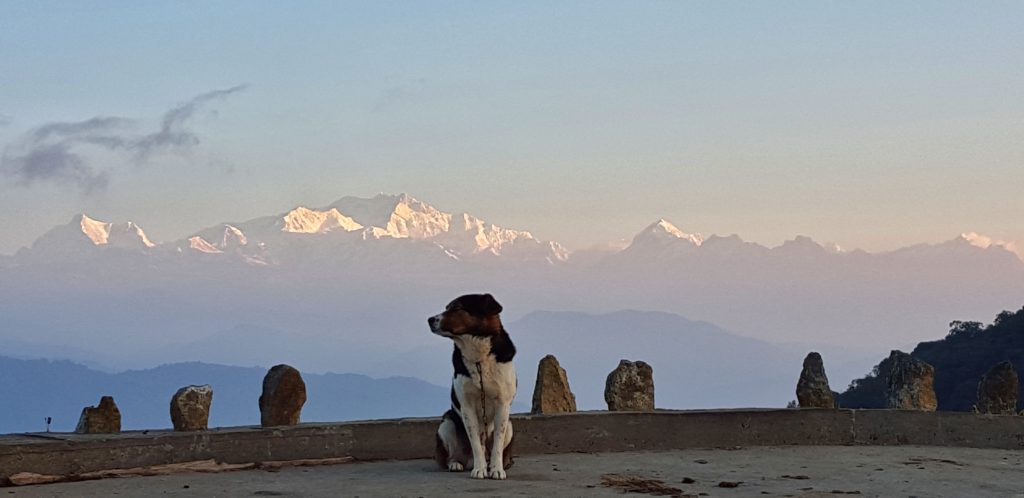
At first, you won’t realise that what you’re watching is a mountain, but then you see the nose first, probably the belly next and then the whole silhouette of what seems like hundreds of interlocking mountain ridges.
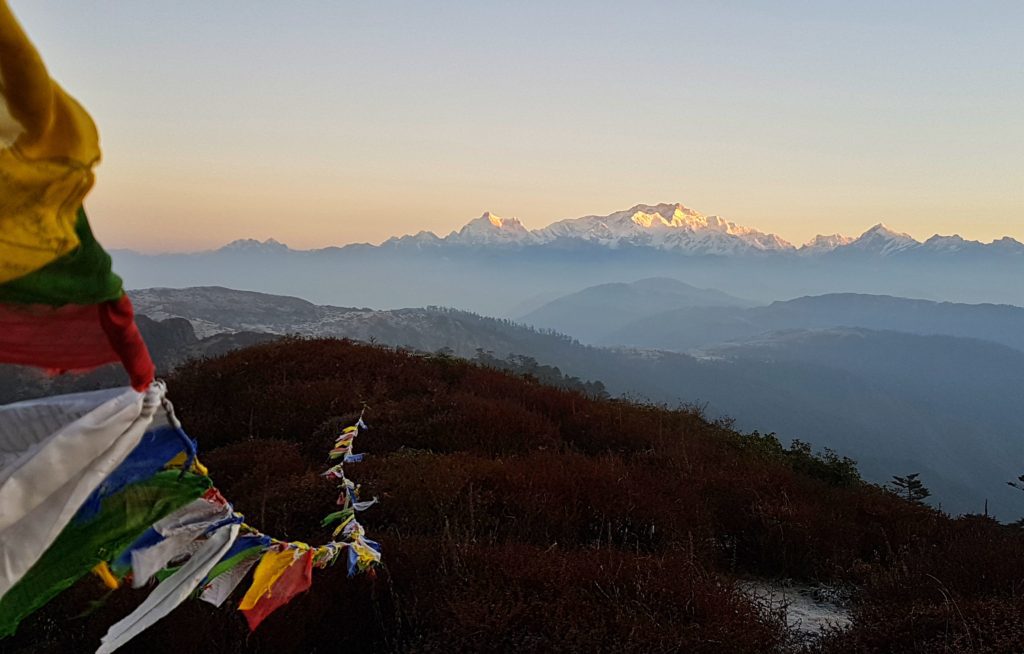
From then on the Sleeping Buddha is your constant companion, hopping to the right sometimes and then to the left, getting bigger and closer after every twist and turn.
Talking India Looking Nepal – or maybe vice versa
No borders….only horizons!!
The Sandakphu trek route lies along the border of India and Nepal between Darjeeling in West Bengal and the Ilam district in Nepal. The fascinating thing is that you may hop into India and scotch into Nepal a dozen times, even without knowing.
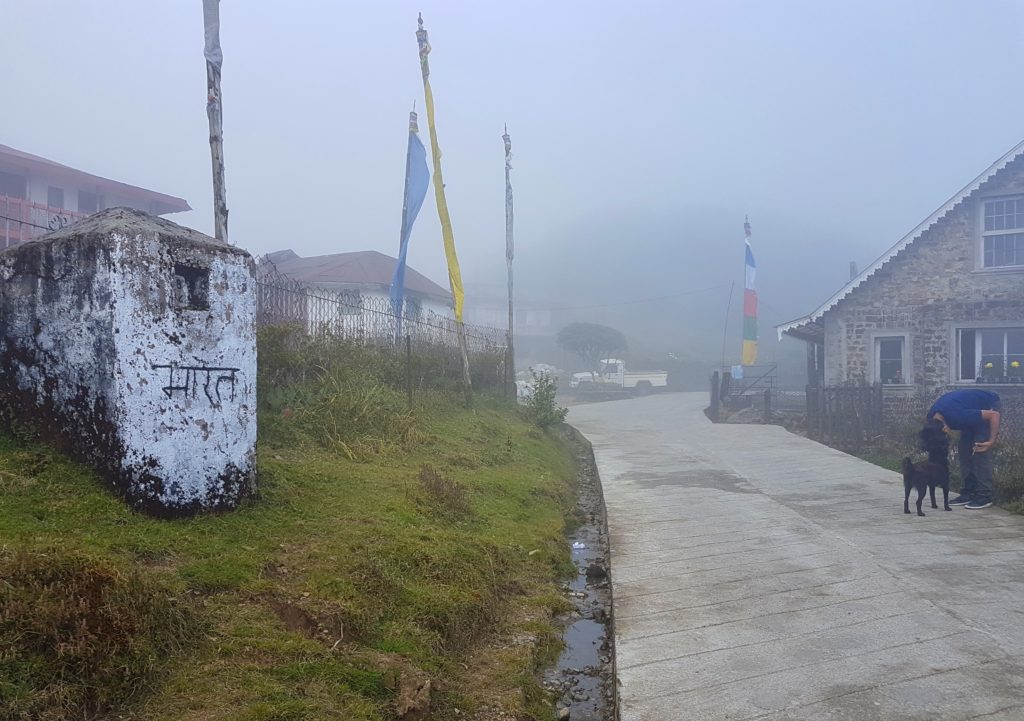
The border stones en route, with India written on one side and Nepal on the other, are proof that trekkers indeed cross an international border multiple times on this trail. But don’t reach for your passport yet, you won’t need it.
At the tea houses, you can tune into Nepali radio channels. And as you trudge higher, even your cell phone catches a feeble signal from Nepal.
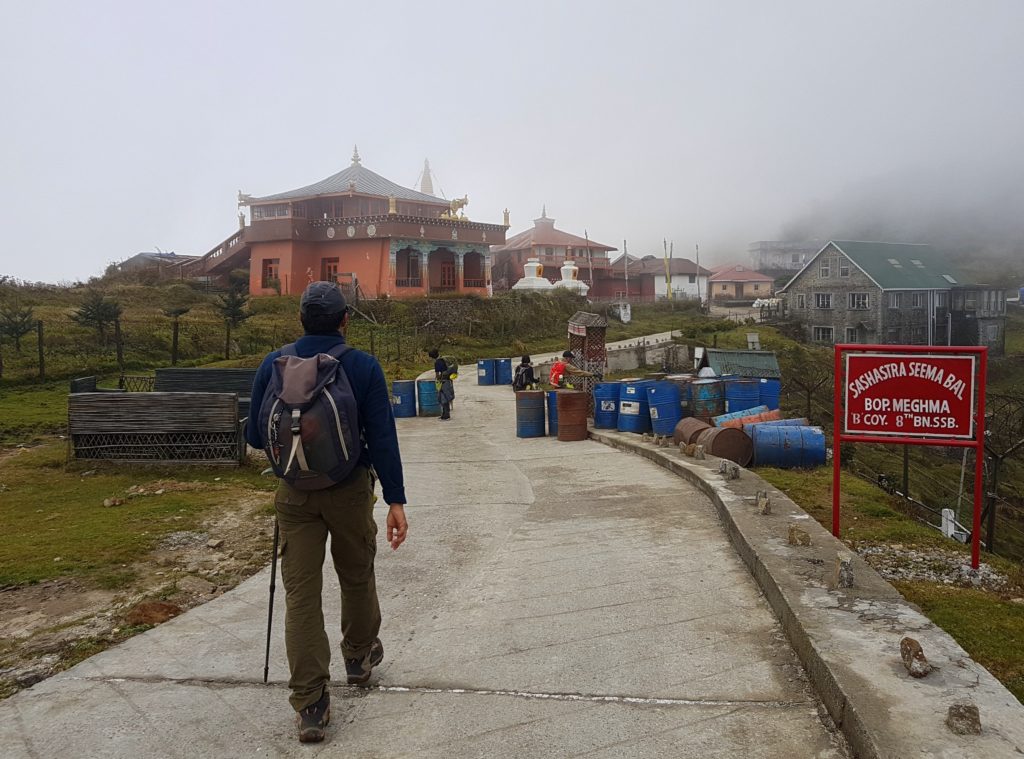
The Sabargram campsite sits bang on the India-Nepal border, so you may be sleeping in India and sipping a cup of tea in Nepal. Where else would you experience this?
Monasteries and chortens
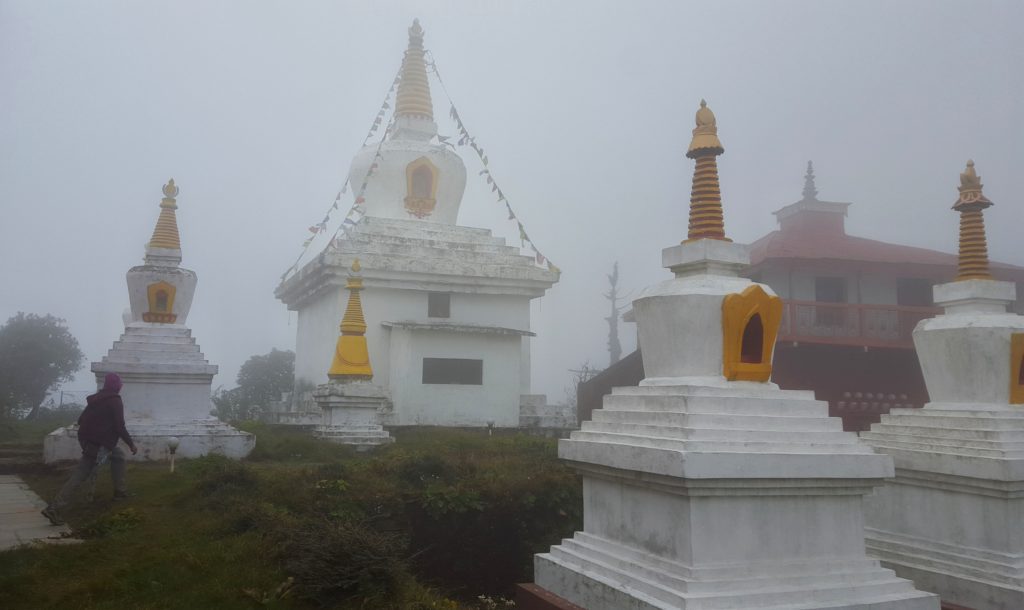
The trail to Sandakphu twists and turns up the mountainside through a labyrinth of monasteries and stupas. They have a calming effect on the mind, the best medicine after a tiring day on the dusty trail.

The mantra Om Mani Padme Hum is found everywhere….on strings of prayer flags – red, blue, green, yellow and white – fluttering in the wind, tied to trees, over bridges and water bodies, in front of houses, on prayer wheels kept in constant motion by horizontal water wheels and flowing streams, and spectacularly carved onto colourful mani stones placed near the small Buddhist shrines in Chittrey and Meghma.
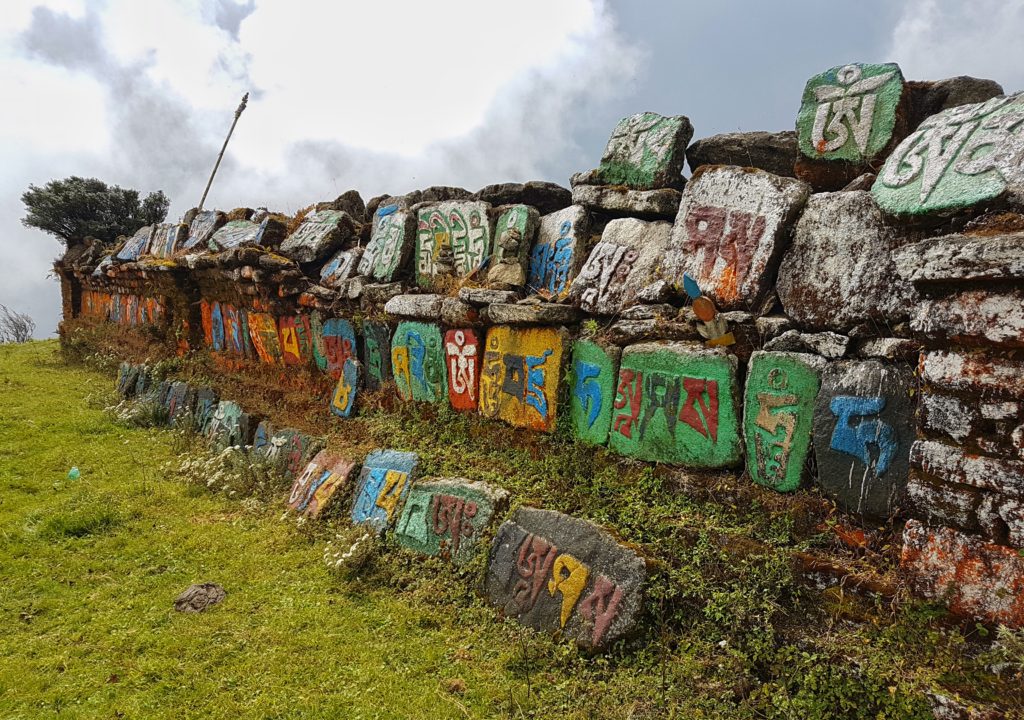
Tea houses
The route is dotted with cosy home stays and tea points where ever-smiling mountain folk cook you delicious food, sing to you romantic Nepali songs and certainly know how to treat you well. Most of the teahouses are managed very efficiently by the women of the house.
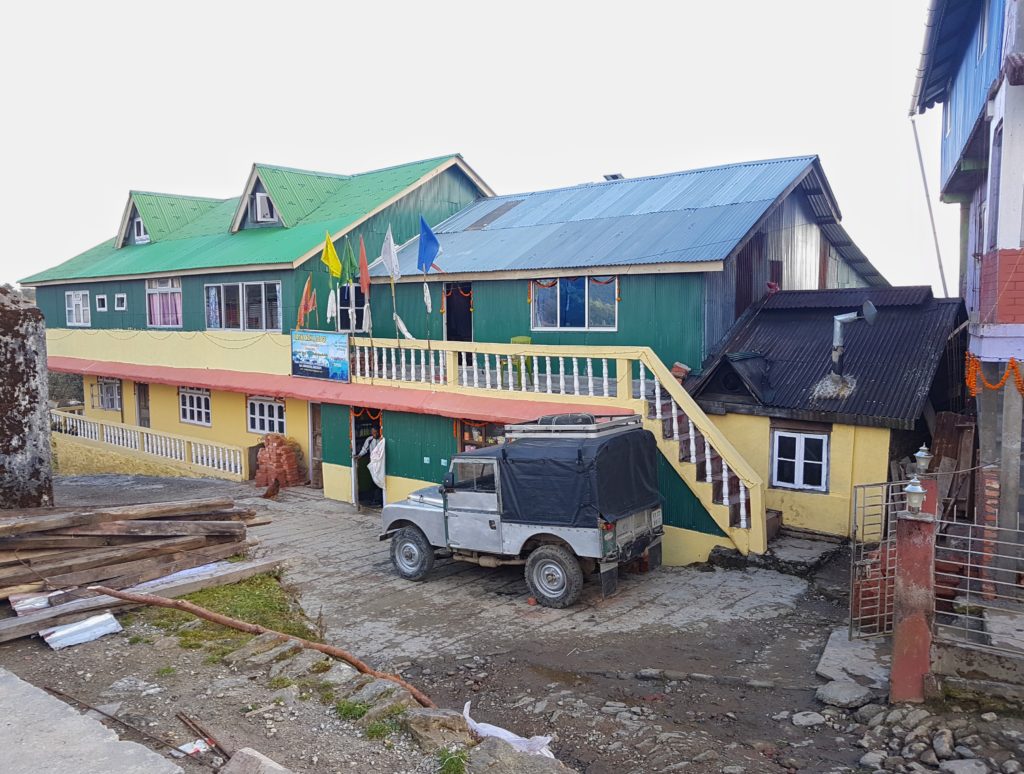
Given the temperature and the howling winds outside, you’d be glad to snuggle under the warm blankets and a cosy bed.
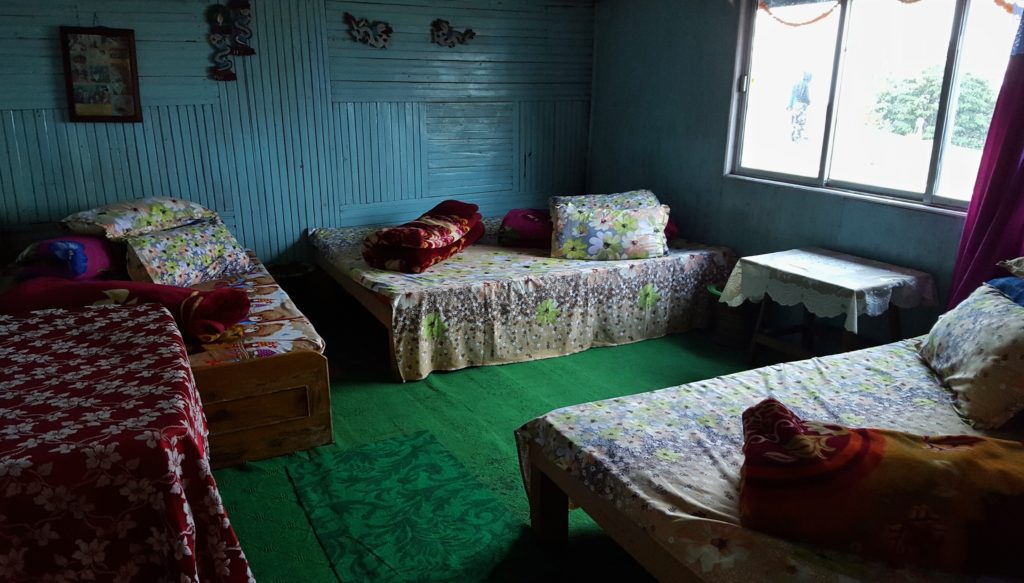
Long distance/telescopic views and the Singalila ridge walk
Every morning you’ll be pointed out the final destination of the day ….. The camps might look a long way off, but you’ll see the steep ascents and descents through the thick oak and rhododendron forests, the zig-zag stone roads traversing through the intervening valleys, the small settlements where you’ll stop for lunch and replenish your water bottles.
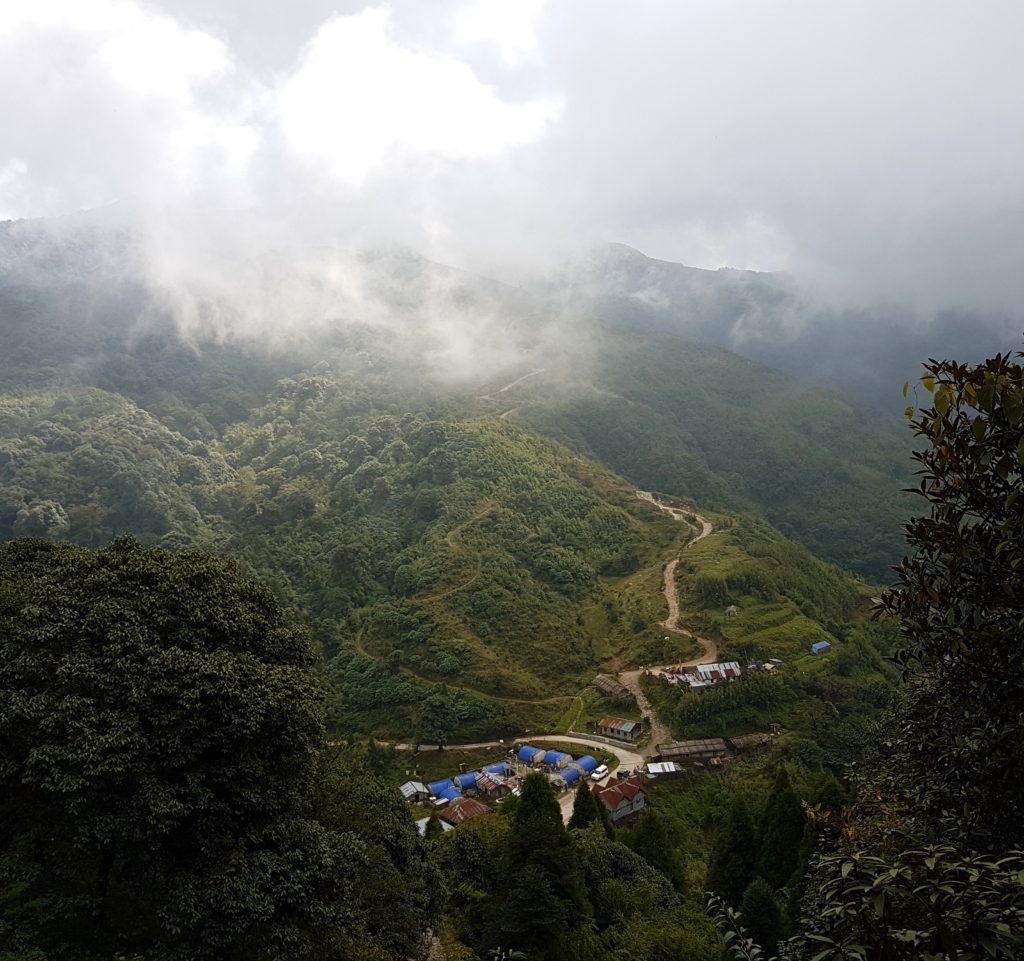
That’s the beauty of a ridge walk!! The route meanders up and down and along the top of the Singalila ridge offering fine views over the flanks, sloping down from either side of you. It feels like you have the whole world laid out before you (and behind) – the ridges in a hundred different shades of greens, browns, purples and greys, the raw beauty of the pristine villages, lush pine and conifer forests, all building up to the grand crescendo of the sighting of the frosty mountains.
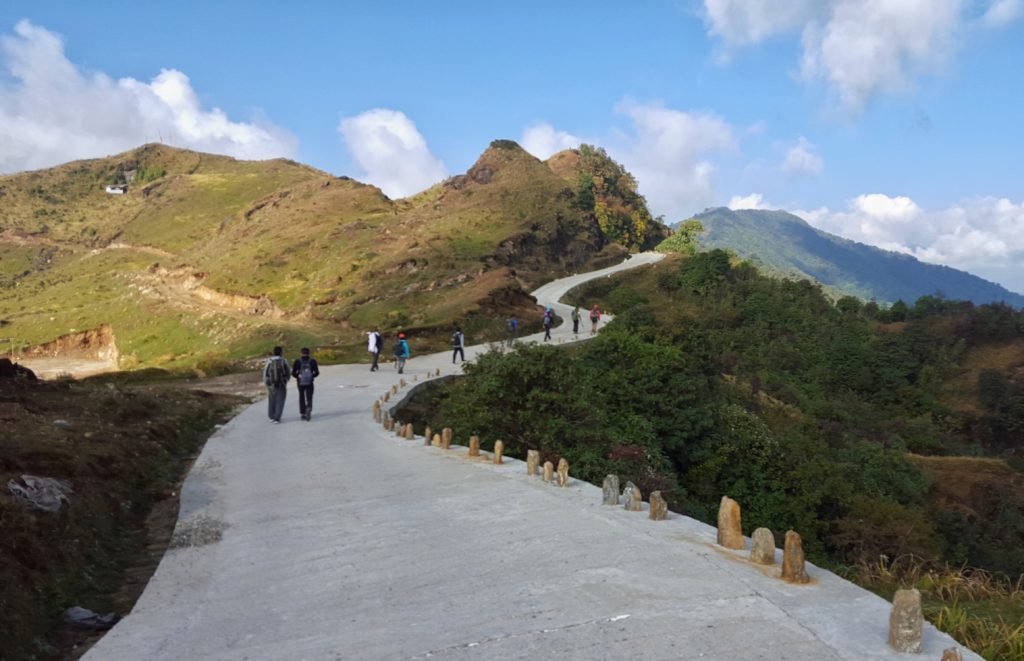
Yes, and there’s always this feeling of being on top of the world.
Sunrises and sunsets
There’s something about a beautiful sunrise and sunset that makes the travel experience complete, the perfect beginning and end to a perfect day in the mountains.
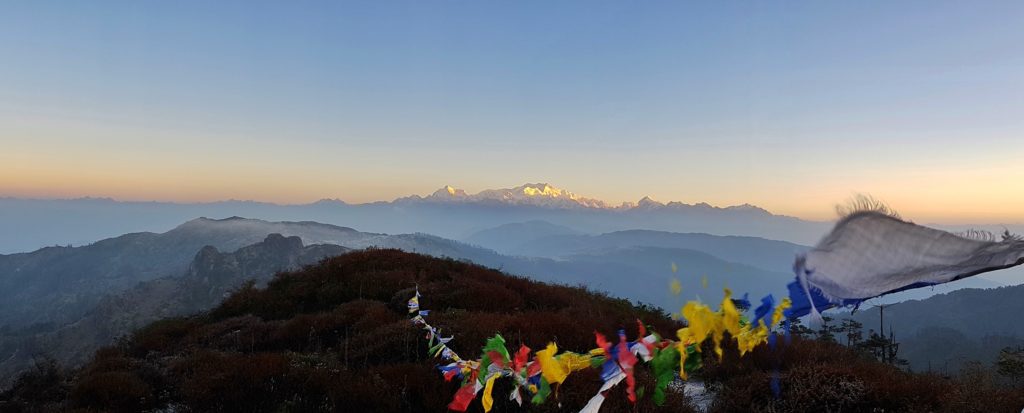
Sandakphu is known for its sunsets and sunrises – all for the simple reason that this trail is high up on a ridge and has low horizons. And you get to see more of the sky than you would if you were camping in a valley.
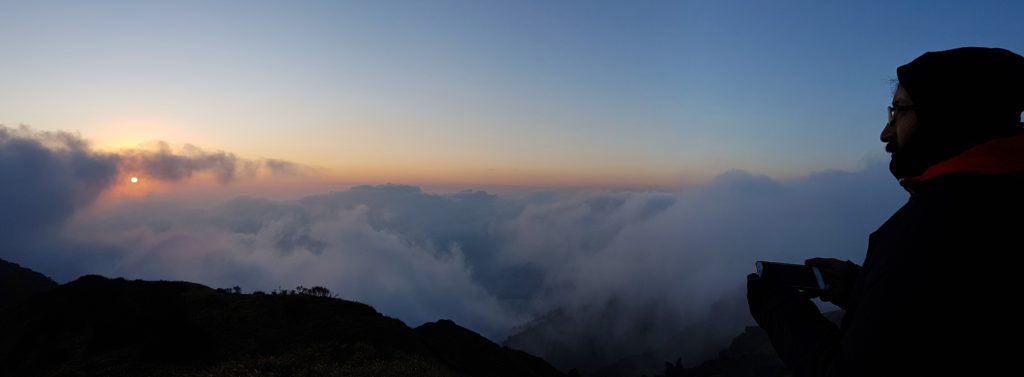
So you’ll be watching the sun casting its rays on one of the mighty peaks, the colours exploding like fireworks and stretching for miles across the sky, changing the colour of the lunar-like landscape down below.
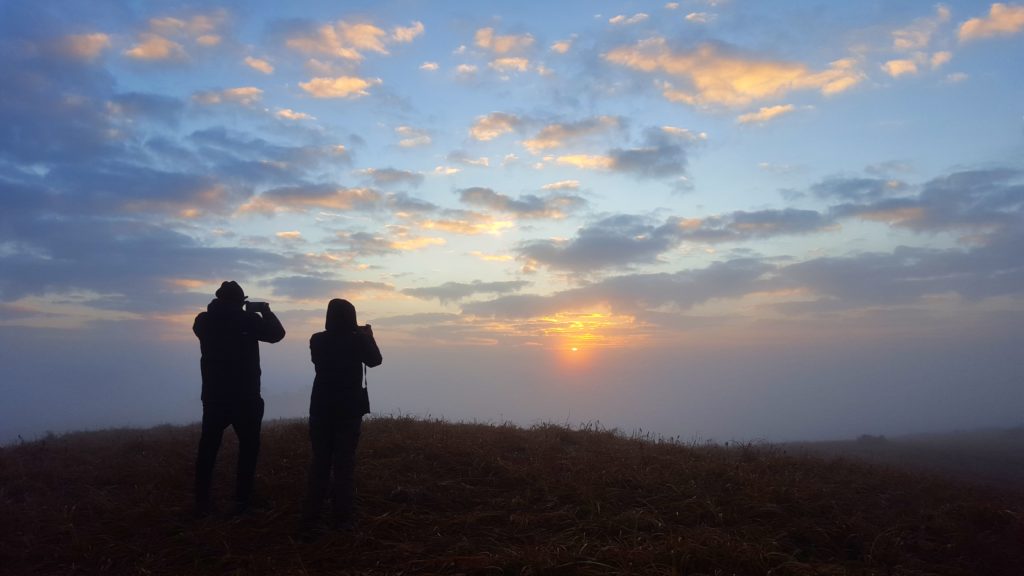
In the mornings, the clouds could play spoilsport … but once they lift, the skies open up into a kaleidoscope of vivid colors, bursting bright oranges and deep purples filling up every corner of your view.
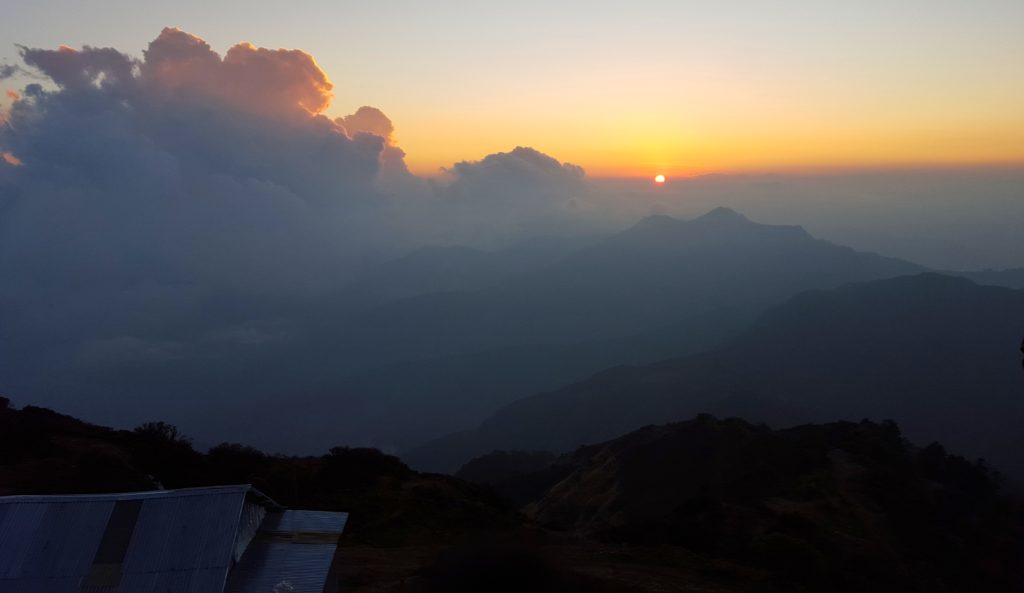
And when the sun sets below you, the clouds will seem to be closer to you than ever. You’ll be left in total awe, signaling the end of another adventurous day in one of the most beautiful locations in the world.
Camping experience under the starlit night sky
Anyone who has done this trek talks incessantly about the sunrises and sunsets. But we would like to add the beauty of the night sky as well.
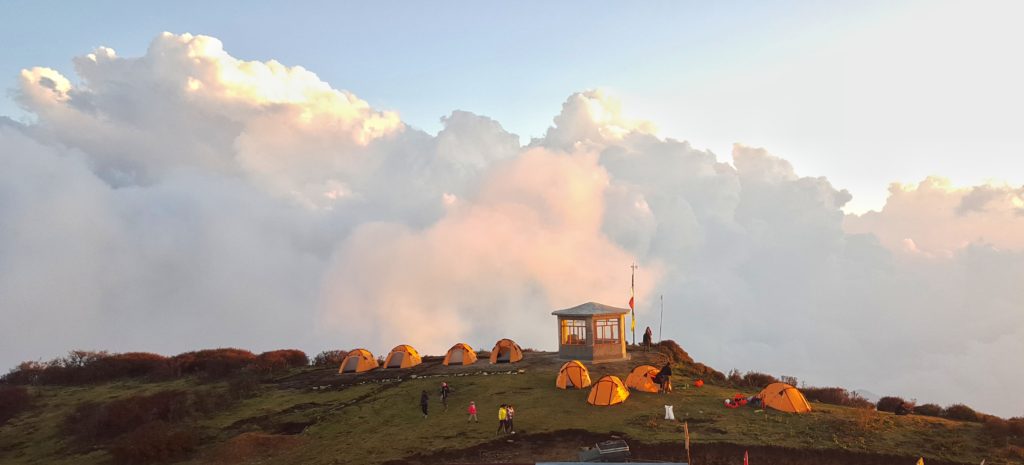
At the camping sites of Sabargram and Sandakphu, if you are game enough to venture out into the biting cold and winds after supper, you’ll be offered a clear view of the skies with its countless stars and constellations. Catch a thousand starts cast a glorious arch high over your head.
Sea of clouds
The campsites are not just the perfect vantage point for the views of the Everest group and sleeping Buddha. The spellbinding beauty of the ‘sea of clouds’ is an ethereal experience. You’ll find yourself level with the immaculately white clouds that appear like a river flowing down from the heavens.
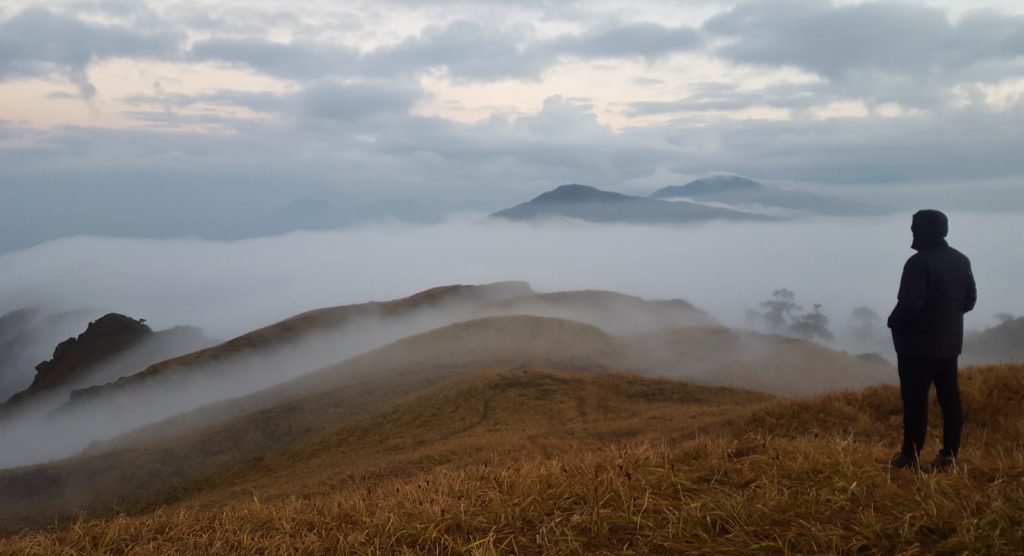
That feeling of being above clouds and watching the sun set below, your exhaustion disappears.
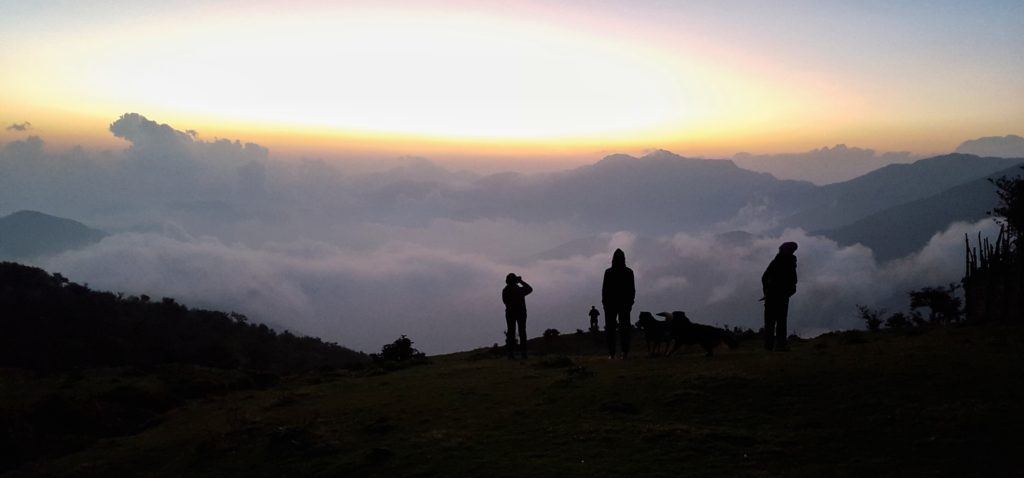
Singalila National Park
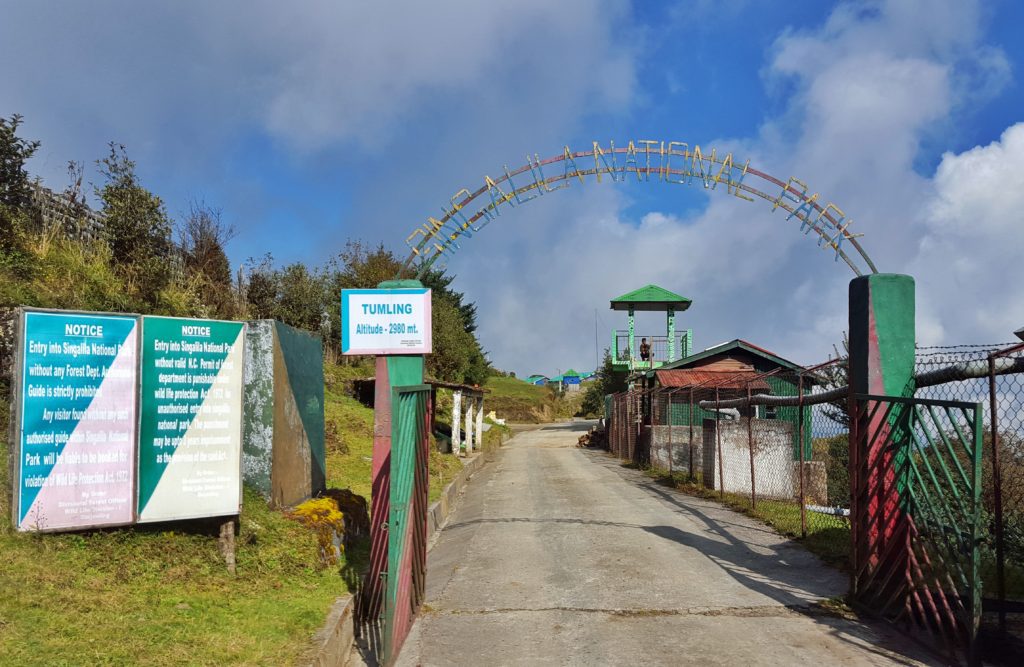
The Sandakphu trek route is not just about lofty mountain ranges and border crossings. The trail passes through some of the most diverse forests, part of the Singalila National Park – there’s magnolia, rhododendron, pines, bamboo, oak and chestnut trees.
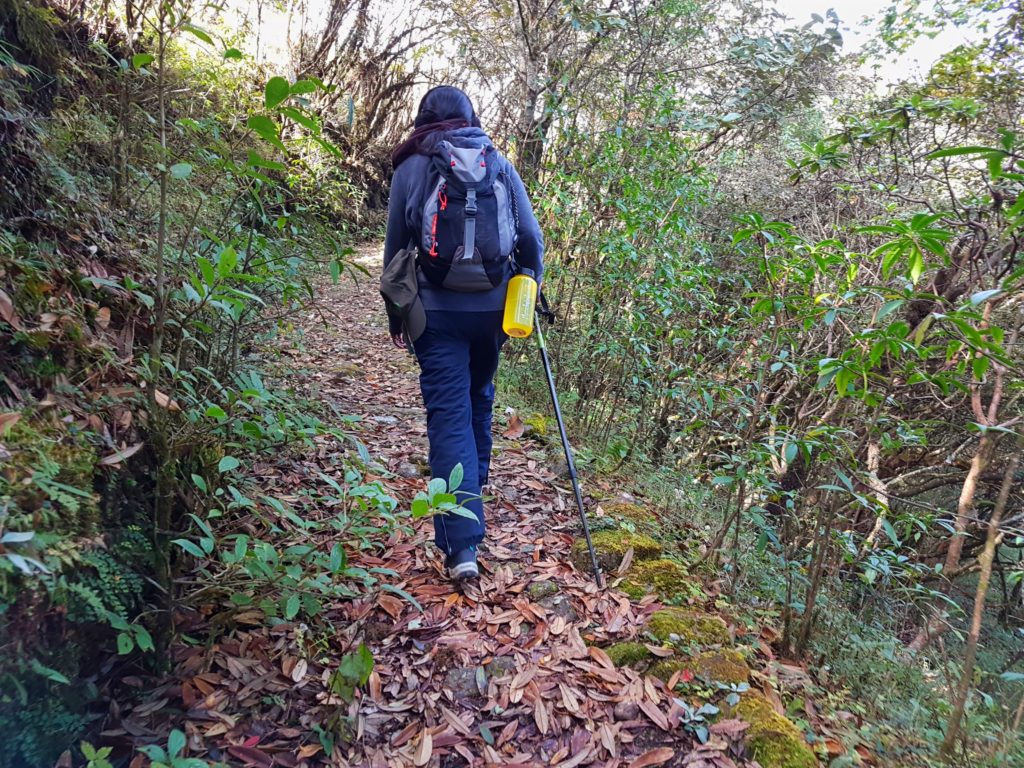
There are forest trails that are so dense that the sunlight barely hits the leaf-laden floors. There are age-old trunks with ferns, mosses and lichens clinging to them. And because the route passes through Singalila National Park, this trek is also known as the Singalila trek. The forest is also famous for sightings of the red panda.
Descending through a dense bamboo forest
How about an enchanting bamboo forest densely packed together in their thousands. The descent to Gorkhey takes you through an incredibly tall and dense bamboo forest where you’ll be surrounded by countless green stalks pointing in every direction.
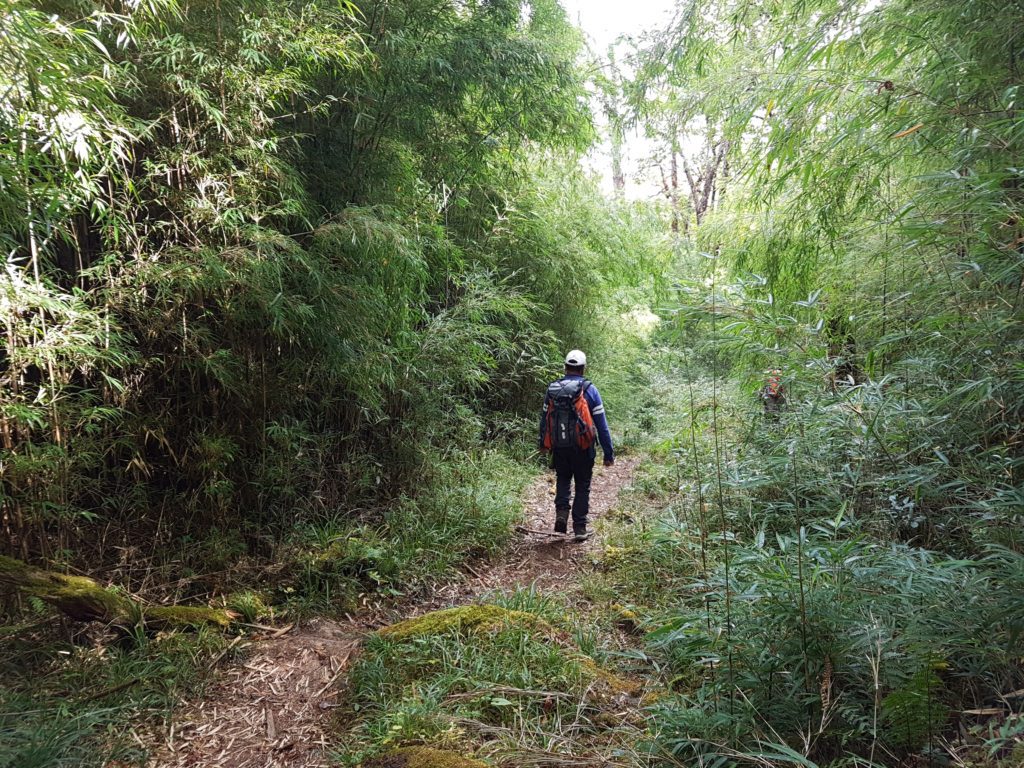
Listen to the singing bamboo stalks as they rub against each other. As the path twists and turns downhill and weaves around the side of a hill, if the constant chirping of cicadas is not deafening, you’ll get to hear many exotic bird sounds. And if lucky, you’ll get the opportunity to sight a red panda.
Beautiful villages of Samanden and Gorkhey
The trail threads between small, characterful mountain villages, both on the Indian and Nepal side – another reason to do the Sandakphu trek.
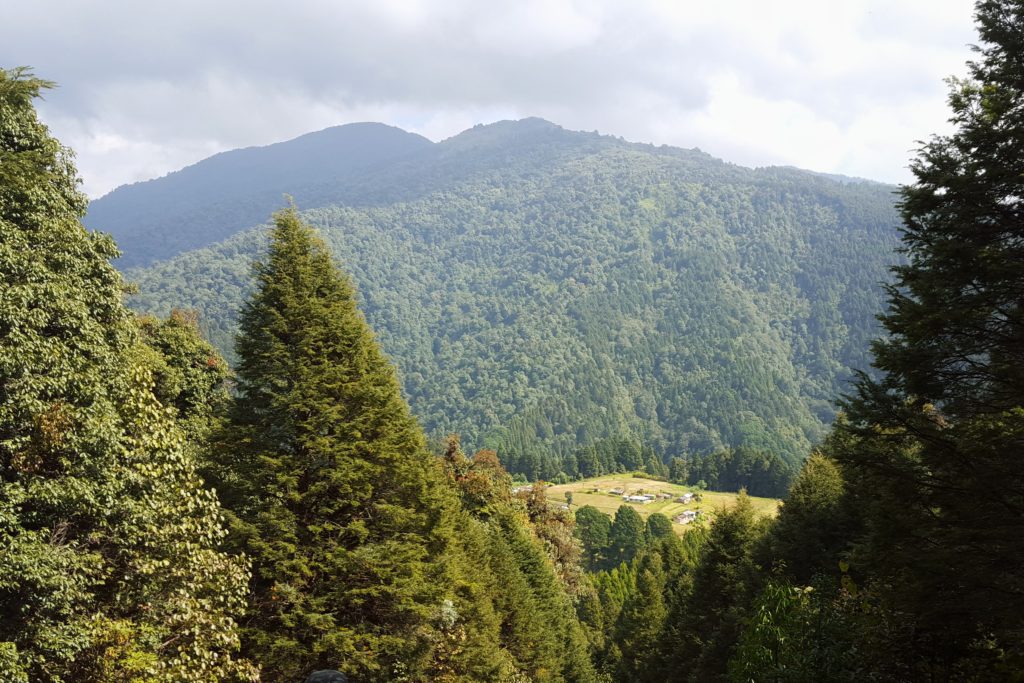
The village of Gorkhey lies at the bottom of the valley on the West Bengal side. You get the first glimpse of the village through a clearing that gives a happy sigh of relief on the descending trail. Surrounded by pine forests, the small village consists of small plots of potato, corn and maize. As you traverse the labyrinthine set of steps linking each home, you’ll find bright orange corn cobs hanging from the porches and glistening in the sun.
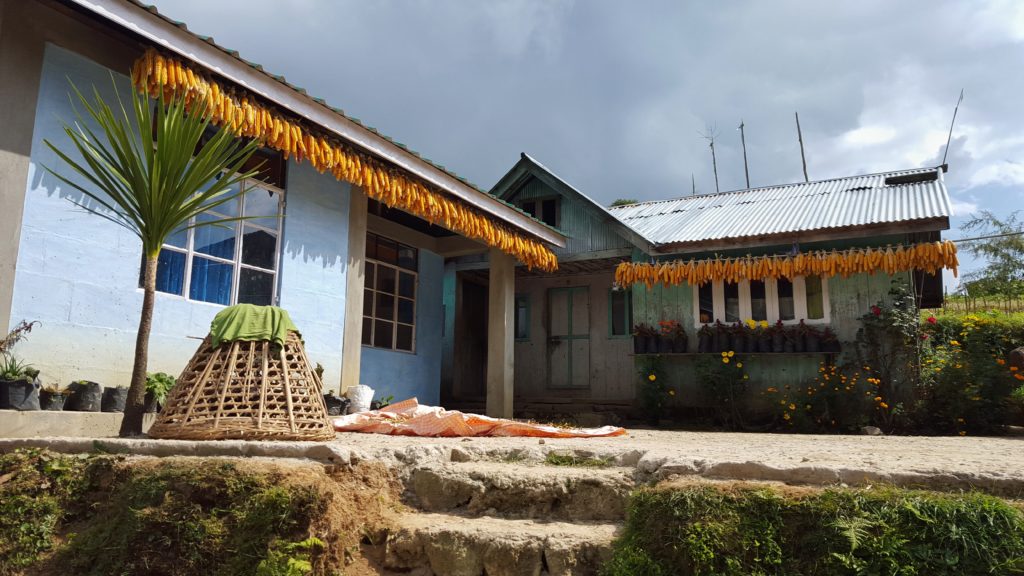
Samanden village, a settlement of well-kept brightly painted wooden houses occupying a large meadow in the midst of a forest, has an alpine feel to it. The locals and their culture are as ravishing as the beauty of the village and you can realize that in their warm greetings. Children smile and wave at you as you walk by.
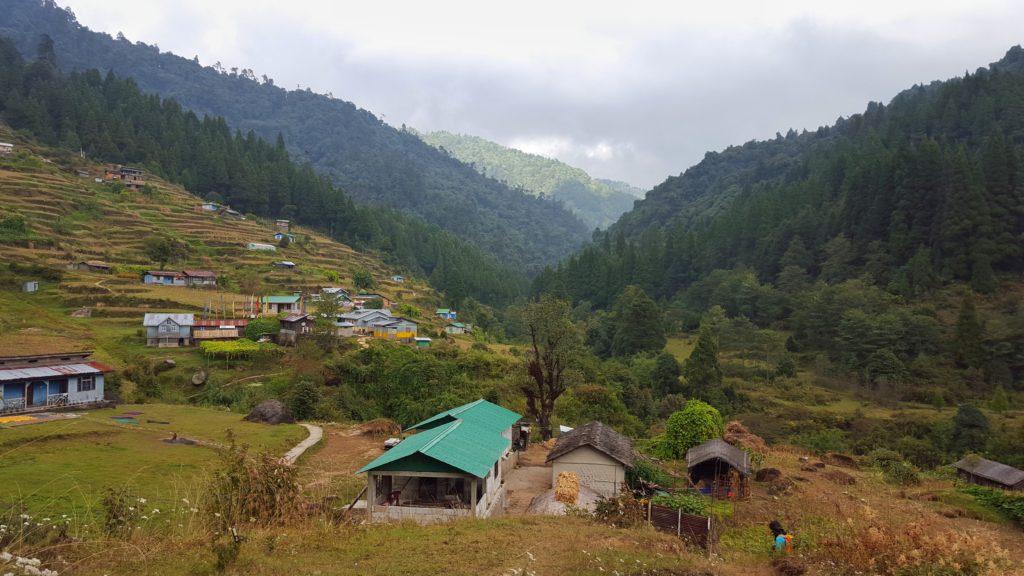
Different seasons different sights
Sandakphu trek is best done in the months from September to May.
If you’re trekking in spring (from mid-march to May), you’ll come across dazzling rhododendrons and magnolia flowers turning the landscape into a riot of reds, pinks and whites.
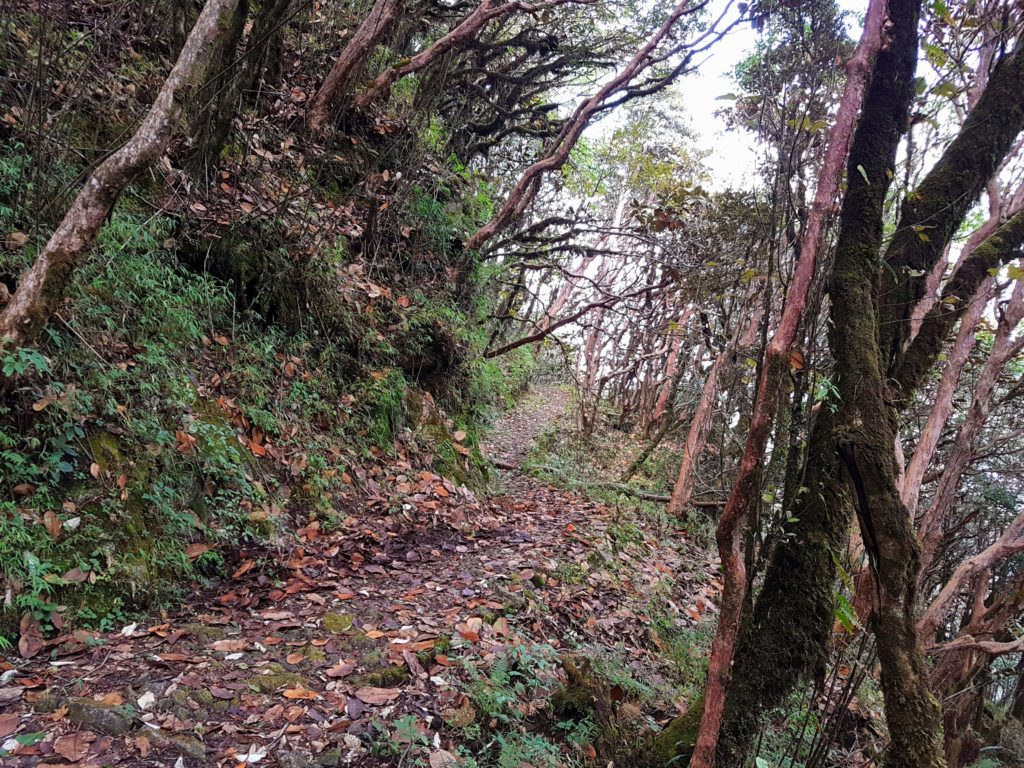
In autumn (from August to October), witness the spectacular fall colours in the verdant deciduous forests, lush green meadows and gigantic mountains complimenting the blue skies. With the foggy season out your way, you’ll get the best views of the peaks. The sunrises and sunsets add a kaleidoscopic charisma to the trek.

If you are looking for a little bit of adventure in the snow, then you should go in the winter months. It will be snowing and the temperature will be below freezing point, but Sandakphu lies at a lower latitude as compared to western Himalayas and the snow will be mild and not be bad enough to block the trail.
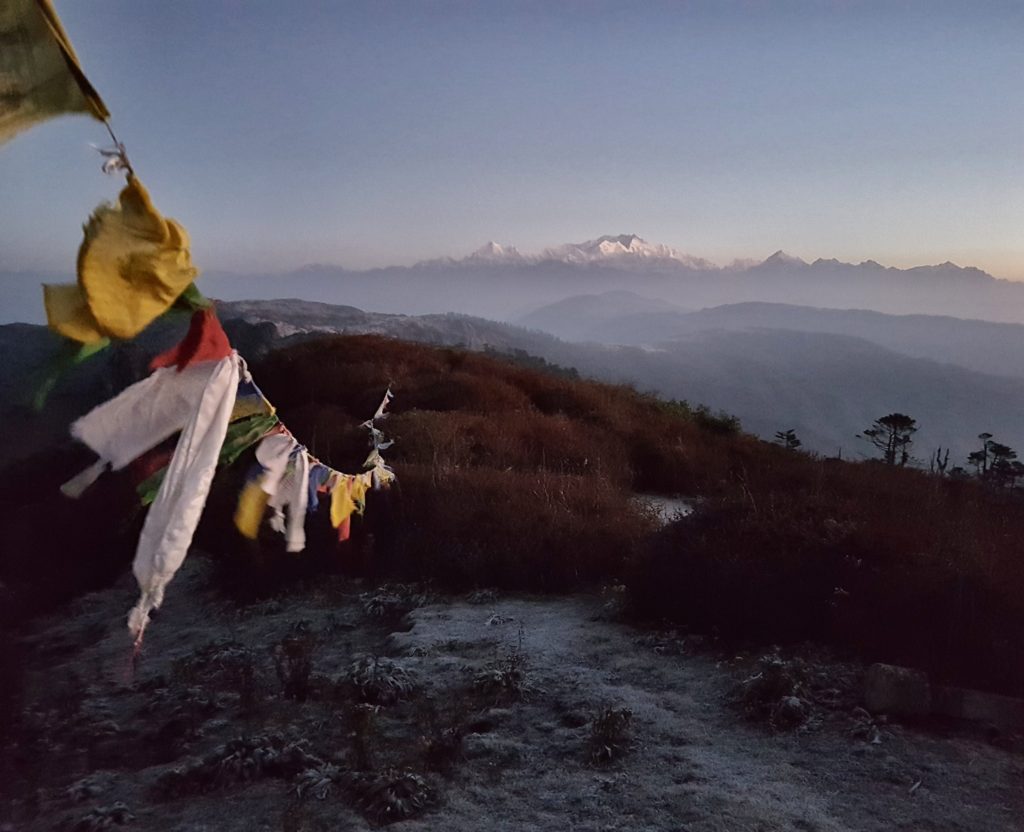
Sandakphu can be cold and windy during winters but that’s not going to hinder the clear views on this trek.
Ideal trek for beginners
Sandakphu is an ideal trek for beginners for many reasons:
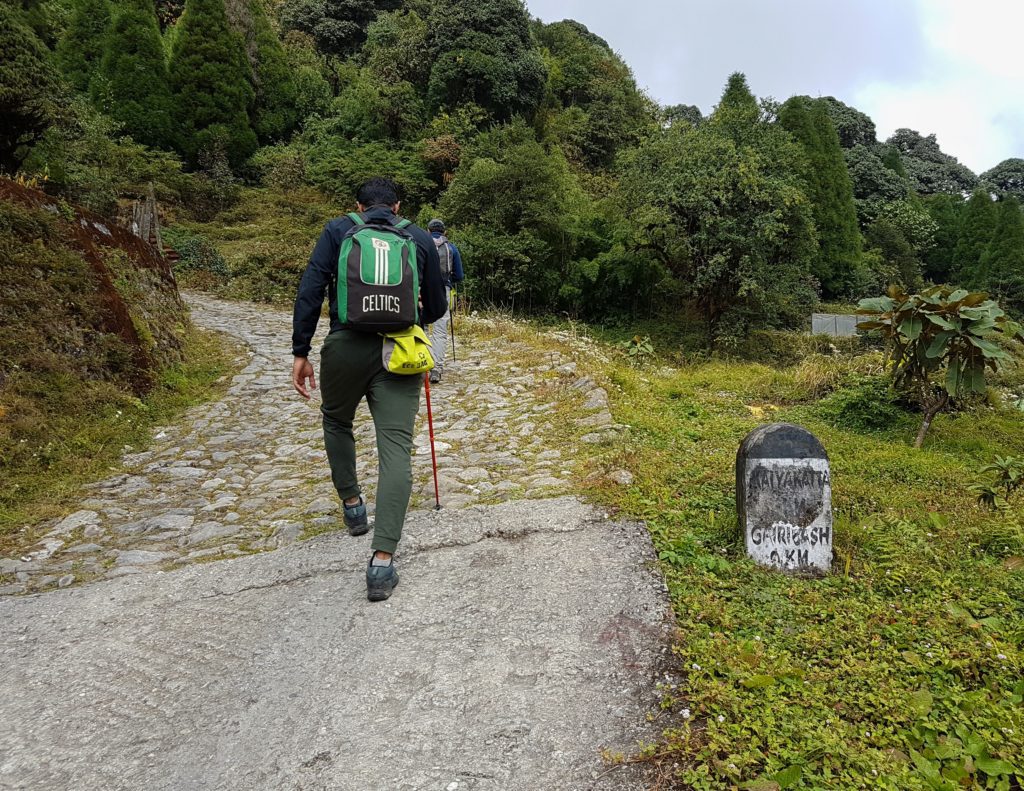
The trail is well marked, kilometer stones are found all along the route, and can be done without the help of a guide. However, taking a guide will boost employment for the locals in the area. Moreover, the guides are trained in dealing with all kinds of emergency.
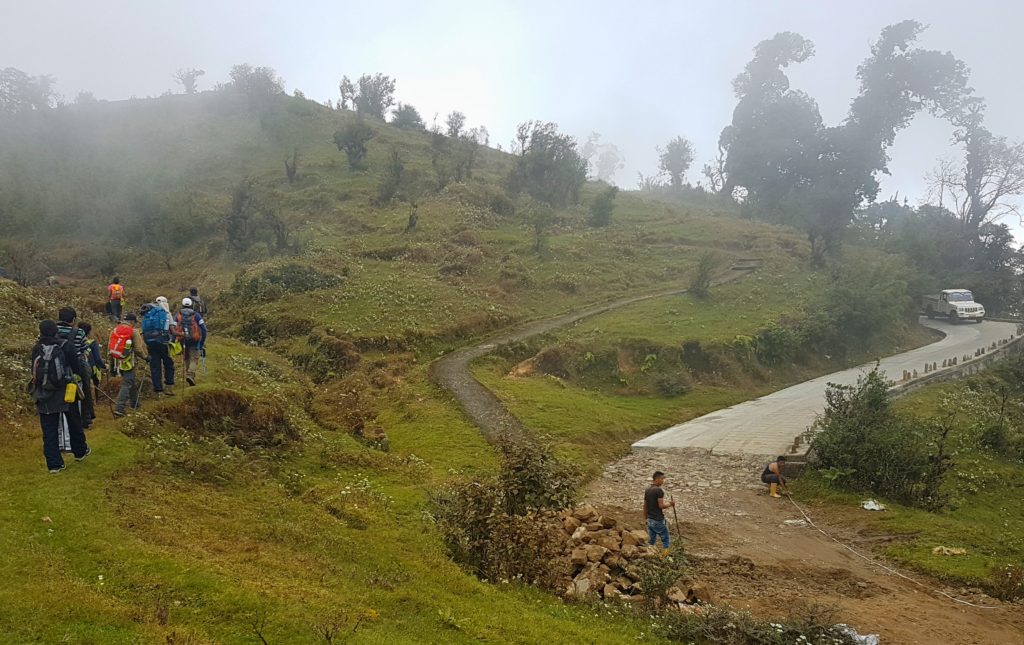
The trek path from Maneybhanjan to Sandakphu and then to Phalut follows a motorable track that is used by decade-old land rovers. Both the routes merge at several places and are used by both trekkers and vehicles. So, if you do not want to hike on a particular day or, in the rare case of an emergency, need to reach the base camp, you can hop onto a land rover, which is an added advantage.
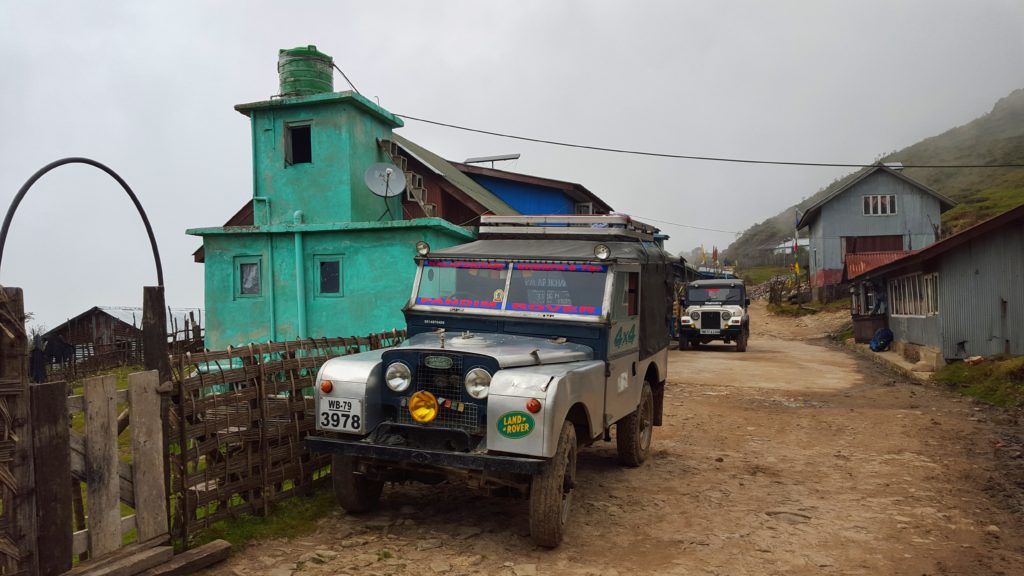
There are shops and settlements along the way. You can take breaks, have a cup of tea, a bowl of Maggi or even a proper dal-chawal meal.
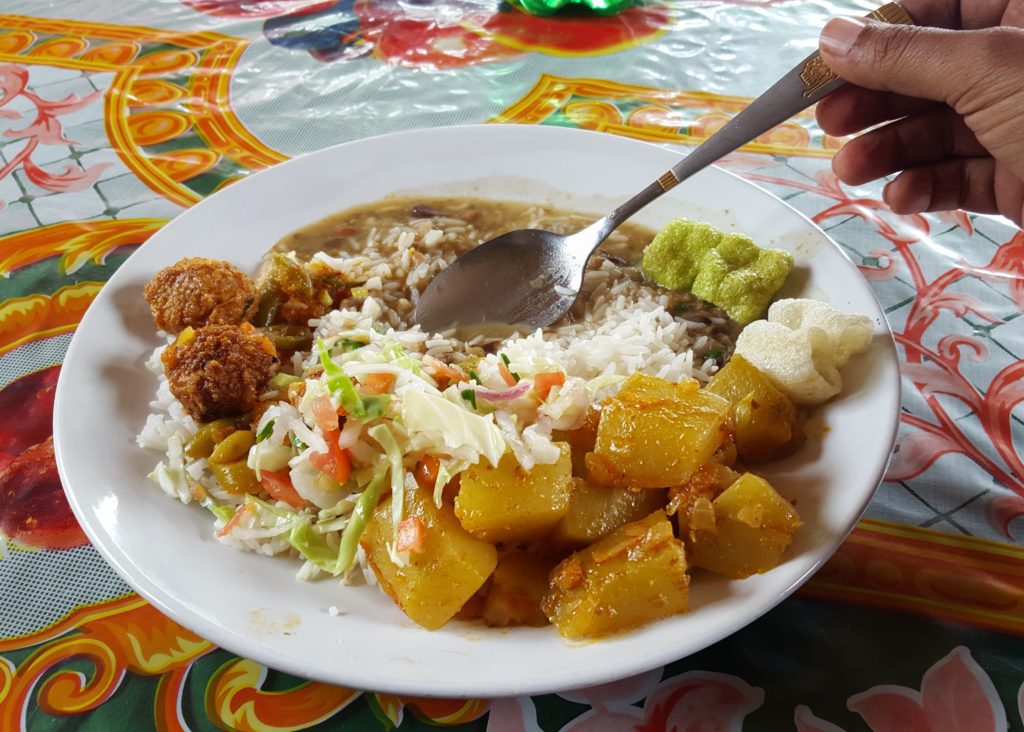
The trek route to Sandakphu does not have continuous steep gradients like many other Himalayan treks. The trek is graded in the easy to moderate category – moderate because there are certain days that are long walk days, even crossing 20 km. However, it gives the beginners a real taste of trekking. The entire circuit takes only 5 days to complete, which is again perfect for beginners.
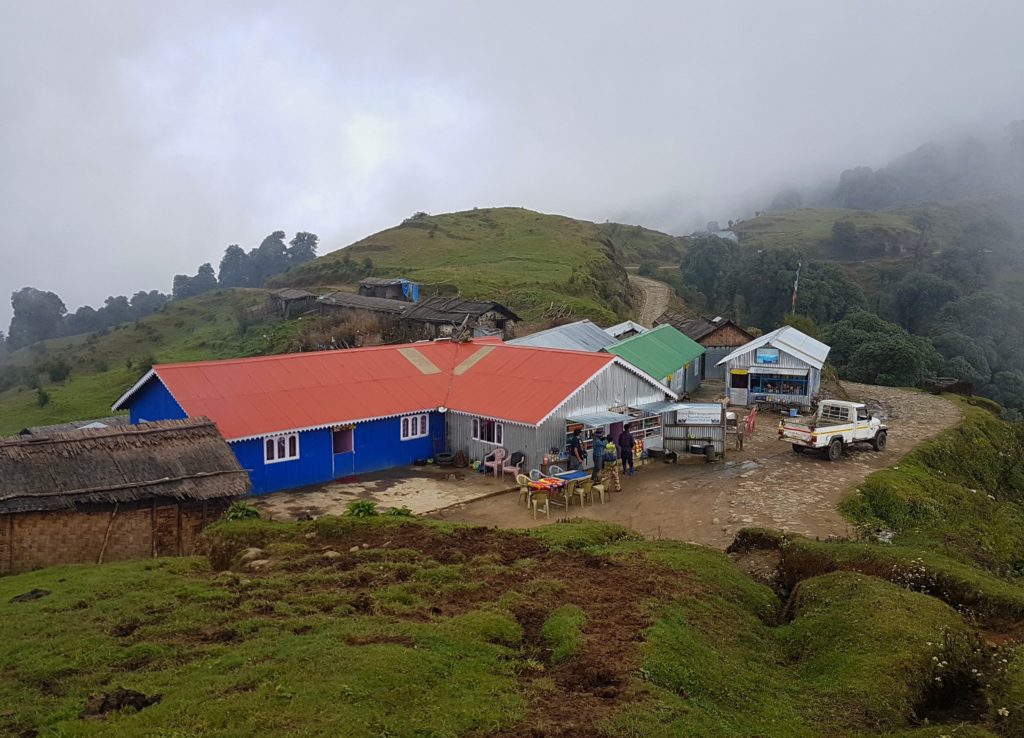
The best of both worlds
Unlike other high altitude treks, where you only have the option to camp in tents and use dry toilets, the extensive network of tea houses along the route means that you also get to stay in one of them for a major part of the journey. Moreover, tea houses have warm comfortable rooms and separate washrooms facilities.
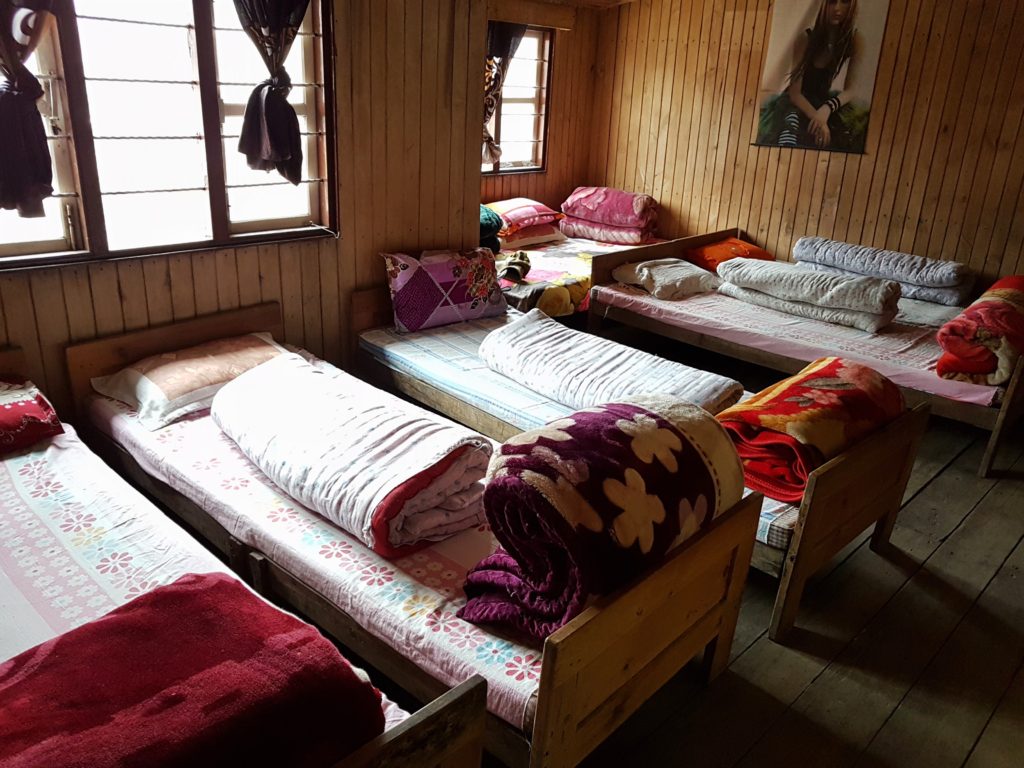
You will stay in tents for at least two days – at Sandakphu and Sabargram – so it’s a great trek to experience the best of both worlds.
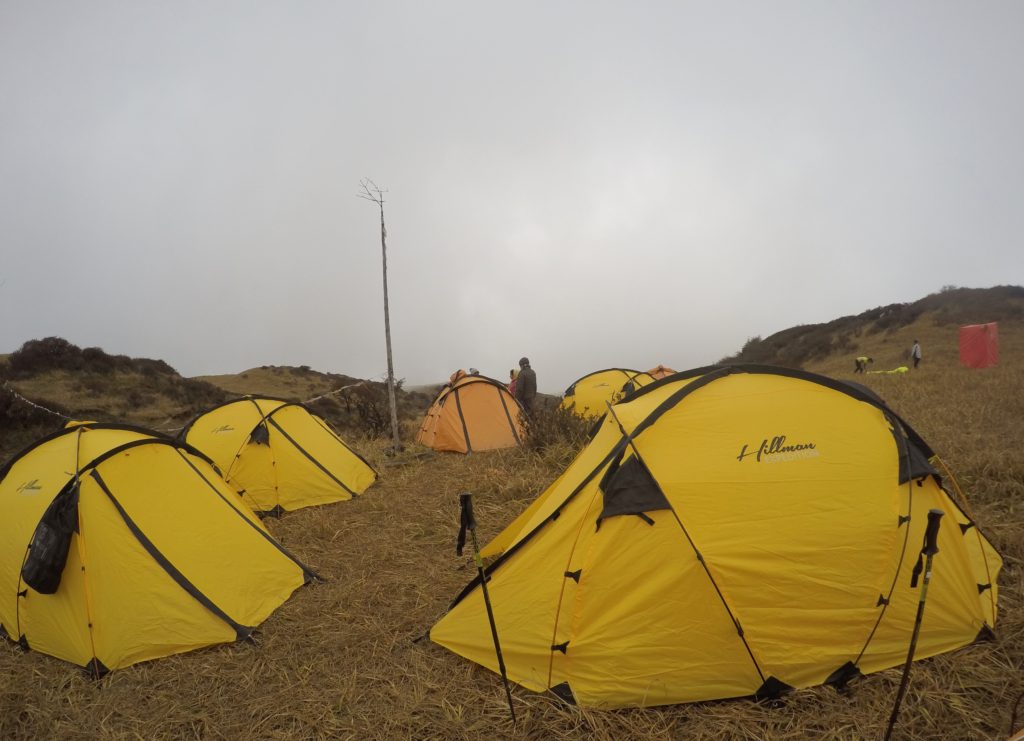
Bonus reason to trek to Sandakphu: Enough options to unwind!!
There is no better place to relax than a hill station after a long trek. So once you’ve done with the trek, there are some beautiful hill stations located within close proximity of Sandakphu which are perfect destinations for a short sojourn.
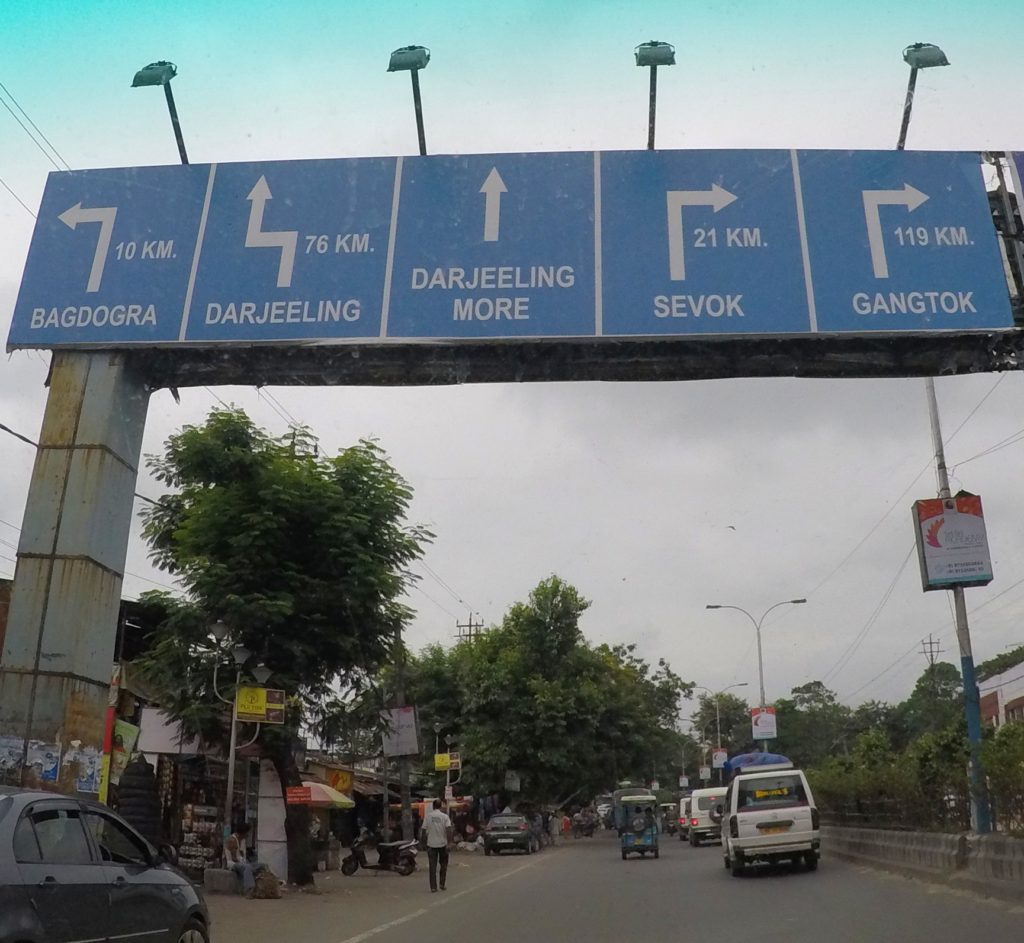
Whether it’s the bustling Siliguri, the popular Darjeeling, the rustic Rimbik, the colonial Kalimpong, the picturesque Mirik, the alpine Kurseong, the exotic Gangtok or the foothills of Dooars, there are many places to choose from where you can put up your trekking shoes and relax.
So, there are unlimited reasons to trek to Sandakphu. What are yours?
Disclaimer: We travelled with Indiahikes and this was our first trek with them; we also travelled with them to Hampta Pass in 2019. Neither the trek nor this post is sponsored by them. But we don’t have any hesitation in recommending Indiahikes to our readers, given the great experience we have had with them on both our treks with them.


